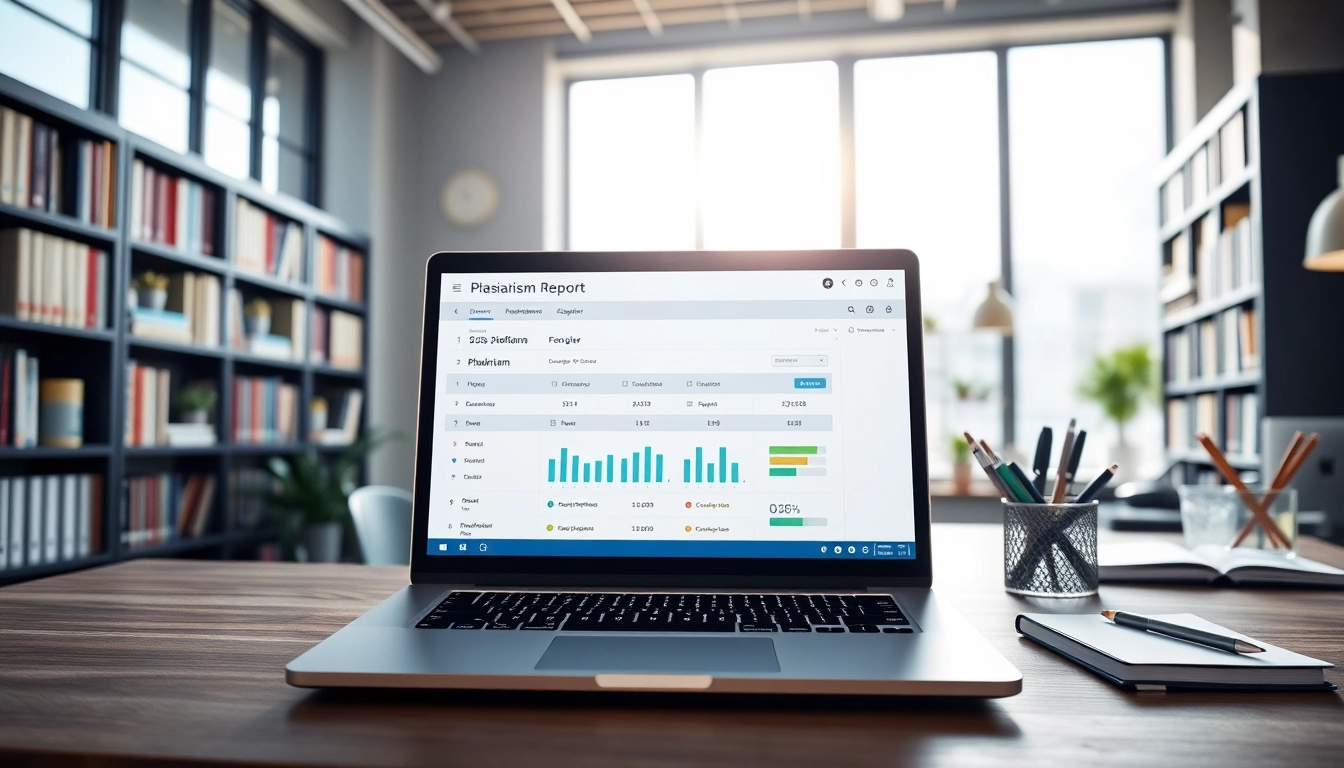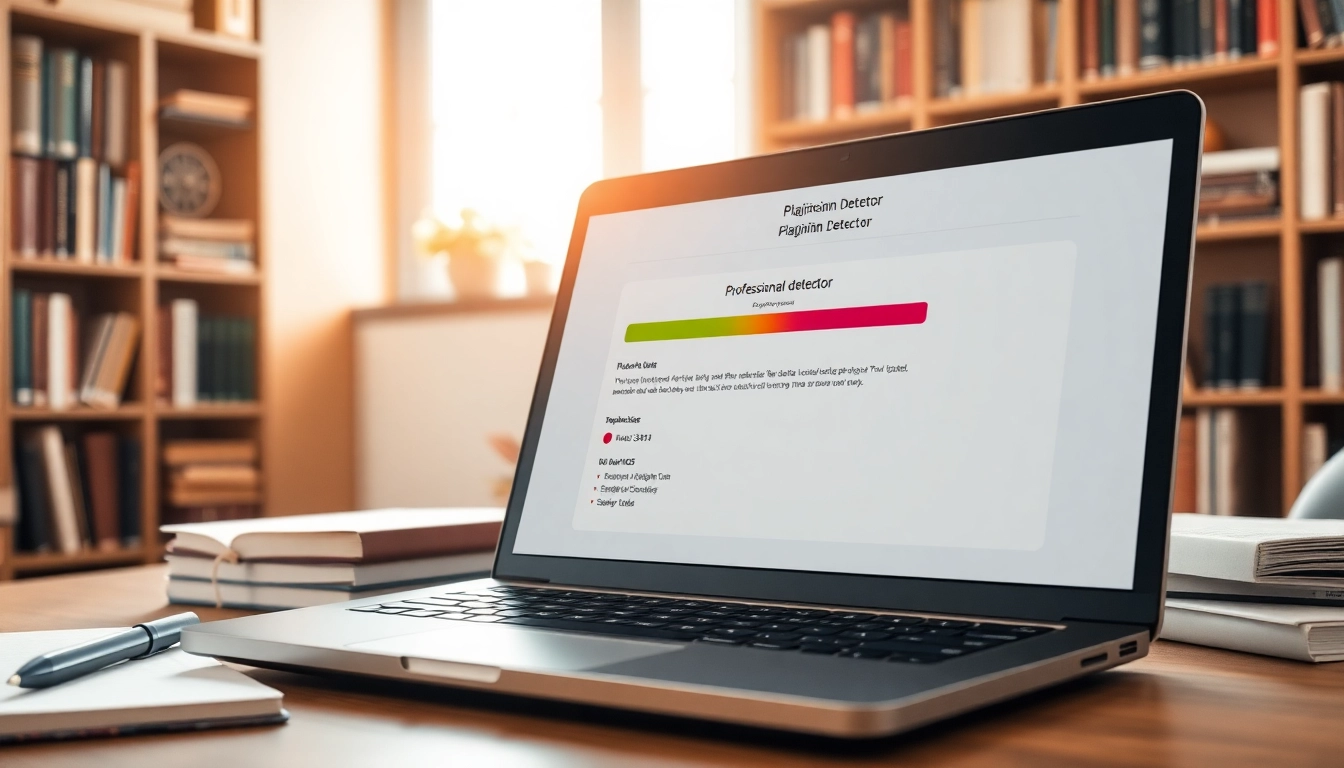Understanding Plagiarism: Definition and Types
Plagiarism is a serious offense that can lead to dire consequences in academic and professional contexts. Understanding what constitutes plagiarism, its various forms, and the implications it carries is crucial for anyone involved in writing or content creation. In this age of digital information and easy access, educational institutions, content creators, and even businesses are increasingly relying on tools like a plagiarism checker to uphold integrity and originality in their work.
What constitutes plagiarism?
At its core, plagiarism refers to the unauthorized use or imitation of others’ work, ideas, or intellectual property and presenting them as one’s own. It is not limited to copying text verbatim but can also include:
- Copying ideas or concepts without crediting the original source.
- Failing to use quotation marks for direct quotes.
- Paraphrasing someone else’s work without acknowledgement.
- Using media, images, or data without permission or proper attribution.
- Submitting someone else’s work as your own, whether through essays, articles, or reports.
Different types of plagiarism explained
Plagiarism can manifest in various forms, including:
- Direct Plagiarism: This is the most blatant form, where one copies another’s work word-for-word without citation.
- Self-Plagiarism: Reusing one’s own previously published work without acknowledgment.
- Patchwork Plagiarism: Involves piecing together content from multiple sources, often without clear attribution, to create a new document.
- Accidental Plagiarism: This can occur when a writer fails to cite their sources properly or unintentionally paraphrases without credit.
- Source-Based Plagiarism: This includes misrepresenting sources, such as citing fictional studies or misattributing quotes.
Consequences of plagiarism in academia
Intellectual dishonesty can have severe repercussions, particularly in academic settings. Consequences may include:
- Failing grades on assignments or courses.
- Academic probation or expulsion from institutions.
- Legal repercussions, including fines or lawsuits.
- Damage to one’s professional reputation and credibility.
Clearly, understanding the different types of plagiarism and the potential consequences is essential for maintaining academic integrity in one’s work.
How a Plagiarism Checker Works
In an era where content is freely available and easily copied, plagiarism checkers serve as vital tools for ensuring originality. These tools utilize advanced technology to identify potential plagiarism in written work, providing peace of mind for students and professionals alike.
Mechanics of plagiarism detection
Plagiarism checkers work by scanning written text against a vast database of sources, including books, articles, websites, and previously submitted works. The process typically involves:
- Text Analysis: The software breaks the content into smaller segments (phrases or sentences) for detailed examination.
- Database Comparison: The tool cross-references each segment against its database to find matches or similar content.
- Reporting: Once the analysis is complete, users receive a report indicating the percentage of similarity with other texts, along with links to the original sources.
What to expect from a plagiarism report
A comprehensive plagiarism report typically includes:
- A percentage score indicating the level of similarity.
- Links to the original sources where similarities were detected.
- Suggestions for improving originality, such as recommendations for paraphrasing or proper citation.
This information is invaluable for users to edit their content and avoid unintentional plagiarism.
Integration with writing tools and software
Many plagiarism checkers have evolved to integrate seamlessly with various writing tools. Popular platforms like Google Docs, Microsoft Word, and educational learning management systems (LMS) often provide built-in plagiarism detection features. These integrations enable users to:
- Check for plagiarism in real-time while composing text.
- Receive instant feedback on any portions that require citations.
- Save time by consolidating editing and plagiarism checking in one platform.
Such integrations empower writers to enhance their work while ensuring academic integrity remains uncompromised.
Choosing the Right Plagiarism Checker
With numerous plagiarism checkers available in the market, selecting the right one can be daunting. However, understanding key features to consider can simplify this decision-making process.
Key features to consider
When evaluating plagiarism checkers, it’s essential to consider the following features:
- Database Size: A larger database increases the likelihood of detecting plagiarism.
- Report Accuracy: High-quality reports deliver precise percentages and detailed sources.
- User Interface: An intuitive interface can enhance user experience and efficiency.
- Integration Capabilities: Checkers that work with your existing writing tools or platforms can save time.
- Affordability: Look for tools that balance features and cost, especially if you’re a student.
Comparison of popular plagiarism checkers
Here’s a brief comparison of some popular plagiarism checkers:
| Plagiarism Checker | Database Size | Accuracy | Price Range | Integration |
|---|---|---|---|---|
| Grammarly | Extensive | High | Free & Paid Options | Integrates with multiple writing tools |
| PapersOwl | Broad | Very High | Free | Basic Integration |
| Turnitin | University Database | Extremely High | Subscription Required | LMS Integration |
| Scribbr | Complete Academic Sources | High | Free & Paid Options | Integrates with academic platforms |
| Duplichecker | Moderate | Good | Free & Paid Options | Limited Integration |
Cost-effective solutions for students and professionals
For those on a budget, several free plagiarism checkers exist, offering reliable detection capabilities. Options like Grammarly’s basic version, Duplichecker, and PaperRater provide valuable services without any cost. However, premium features, such as comprehensive reporting and larger databases, generally come with subscription fees. It’s essential to assess your individual needs and choose a plagiarism checker that offers the best balance of features and affordability.
Best Practices for Avoiding Plagiarism
Understanding how to prevent plagiarism is just as crucial as detecting it. There are several strategies that writers can adopt to ensure their work remains original.
Effective paraphrasing techniques
Paraphrasing is an essential skill that involves rewording someone else’s ideas while maintaining their original meaning. Effective techniques include:
- Reading the original text thoroughly before attempting to paraphrase.
- Taking notes and using your own words without looking at the original text.
- Changing the structure of sentences and replacing words with synonyms.
- Using a plagiarism checker to ensure the paraphrase is original.
Proper citation methods and tools
Proper citation is the cornerstone of academic integrity. It’s important to familiarize oneself with various citation styles like APA, MLA, and Chicago. Free online resources and citation tools such as:
- Cite This For Me
- EasyBib
- RefME
These can help streamline the citation process, ensuring that all necessary sources are credited appropriately.
Using plagiarism checkers as a part of your writing process
Incorporating a plagiarism checker at various stages of your writing process can significantly enhance the originality of your work. Consider these steps:
- Run initial drafts through a plagiarism checker to identify potential issues before finalizing.
- Use the feedback to adjust quotes, paraphrases, and citations accordingly.
- Finalize your work with a last-minute check to ensure everything appears original.
This practice contributes to a more refined and plagiarism-free output.
Future of Plagiarism Detection Technology
The field of plagiarism detection technology is rapidly evolving. As content on the internet grows, so too do the techniques and technologies used to counteract plagiarism.
AI advancements in plagiarism detection
Artificial intelligence (AI) is revolutionizing the capabilities of plagiarism checkers. With machine learning algorithms, these tools can detect more complex forms of plagiarism, including:
- Subtle paraphrasing
- Pseudonymization or alterations in text structure
- Identifying even the briefest snippets of copied text across vast databases
This allows for a significantly higher level of accuracy compared to traditional methods.
Emerging trends in academic integrity
As educational institutions become increasingly digital, a heightened emphasis on academic integrity is evident. Emerging trends include:
- Integrating plagiarism checkers into learning management systems (LMS) as a standard feature.
- Implementing educational programs to teach students about plagiarism, its consequences, and how to avoid it.
- Using blockchain technology for secure and verifiable submission of academic work.
Resource recommendations for ongoing learning
In a continuously changing digital landscape, staying informed and updated on the latest practices in plagiarism detection is crucial. Recommended resources include:
- Online courses on academic writing and integrity.
- Blogs and podcasts focused on ethical writing practices.
- Webinars by educational institutions discussing trends and technologies in plagiarism detection.
By engaging with these resources, writers and students can sharpen their skills and maintain academic integrity in their work.



